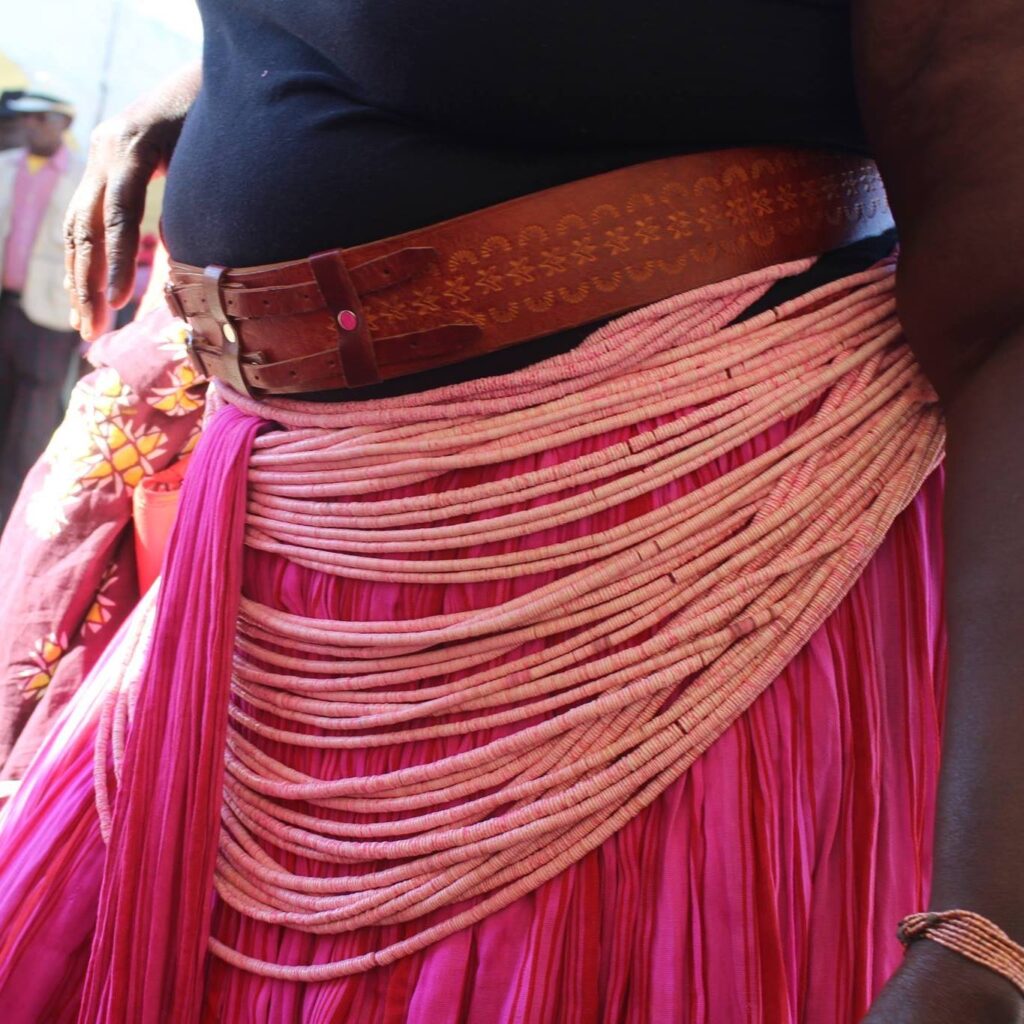Edjalo lOndjeva oshinima sha fimana ko vakwanyama. Pa mufyuululwakalo, Ondjeva oha i djalwa kookana kokadona nelalakano oku pameka edimo lokaana lihakale la endjelela. Ondjeva iha idjalwa ashike kukeshe omukainhu ndee oha idjalwa ashike ko ukadona. Oukadona pa mutjo ou, omukainhu ou ina hombolwa yee kena ounona. Ngeenge omukainhu ahombolwa ile amono ounona iha djala vali Ondjeva, ndee oha djala oumanya osho hashi ulike kutya ou keshi vali okaadona ndee omukulukadi.

Konale ngee ovamati tava kongo oukadona, iha va pulaa pula ngee omunhu okuna okaana ile kena oha va tale ashike kwaashi adjala moshiya shaye. Shoo eshi osho nee kwali efimano londjeva. Edjalo londjeva okwali lafimanekwa, no ukadona okwali vehole okudjala eendjeva osheshi okwali tashi ulike ongushu youkadona wavo. Mo paife endjalo londjeva ina li fimana naana molwaashi efimano lo mufyuululwa kalo ota likana, no molwayoo o maitavelo opa u kriste.


The Importance of waist beads: Ovakwanyama traditional.
The waist beads/ Ondjeva is an important item in the tradition of ovakwanyama. The main reason for a girl child to wear Ondjeva is to shape their stomach. Traditionally, Ondjeva is worn not just by all females but by girls. Girls in this regard refers to a lady who is not married and does not have children. Once a lady is married or gave birth, they no longer wear Ondjeva, they wear oumanya, which signifies that that person is no longer a girl but a woman. So, in the past, when a man is looking for a lady, they do not ask if a lady has children or not, they will already see it when they see what she is wearing on her waist and that was mostly the importance of Ondjeva.
It was mandatory in the past and also a pride for women to show off their value as ladies. Nowadays, people no longer regard this as critical, due to the loss of value of culture and traditions and most probably due to Christianity.
More reading: https://www.thevillager.com.na/articles/5377/along-came-the-oshiwambo-waist-beads/

